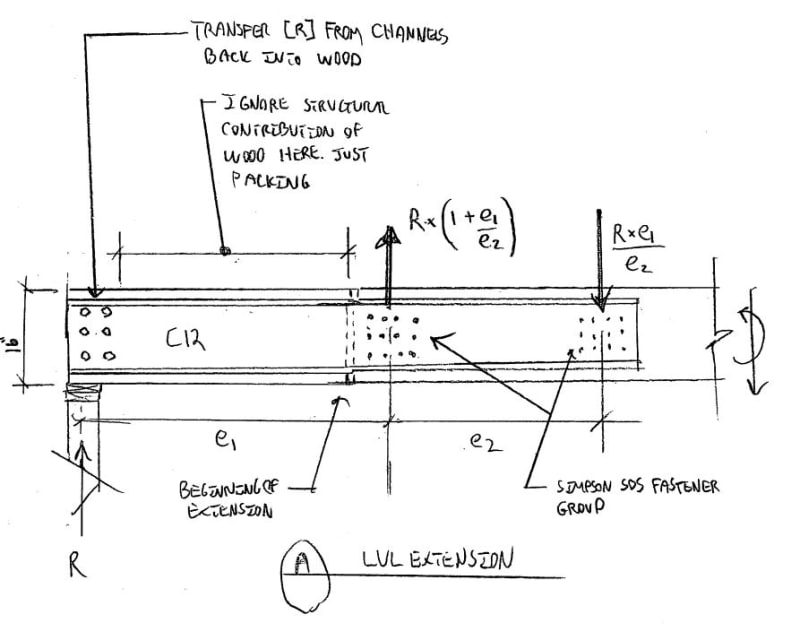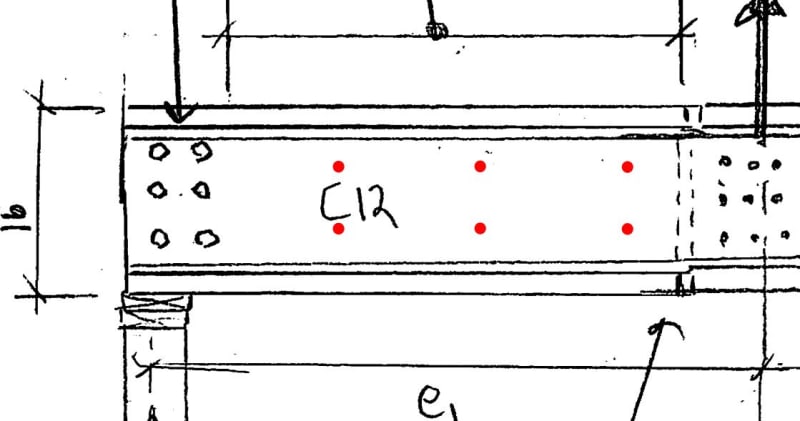youngblood30
Structural
- Jan 28, 2020
- 17
3-Ply 16” LVL currently spans about 20 feet. One support has to be moved 4’ out. They can’t install a new beam for a number of reasons so they proposed a partial flitch plate splice to extend the beam 4’ to the new bearing.
We have about 680plf on this beam which gives me about 6 5/8” bolts at the bearing with 3 bolts 16” o.c. How far past the splice does the plate need to get ran? Going with 2 3/8” plates on each side of LVL.
We have about 680plf on this beam which gives me about 6 5/8” bolts at the bearing with 3 bolts 16” o.c. How far past the splice does the plate need to get ran? Going with 2 3/8” plates on each side of LVL.


